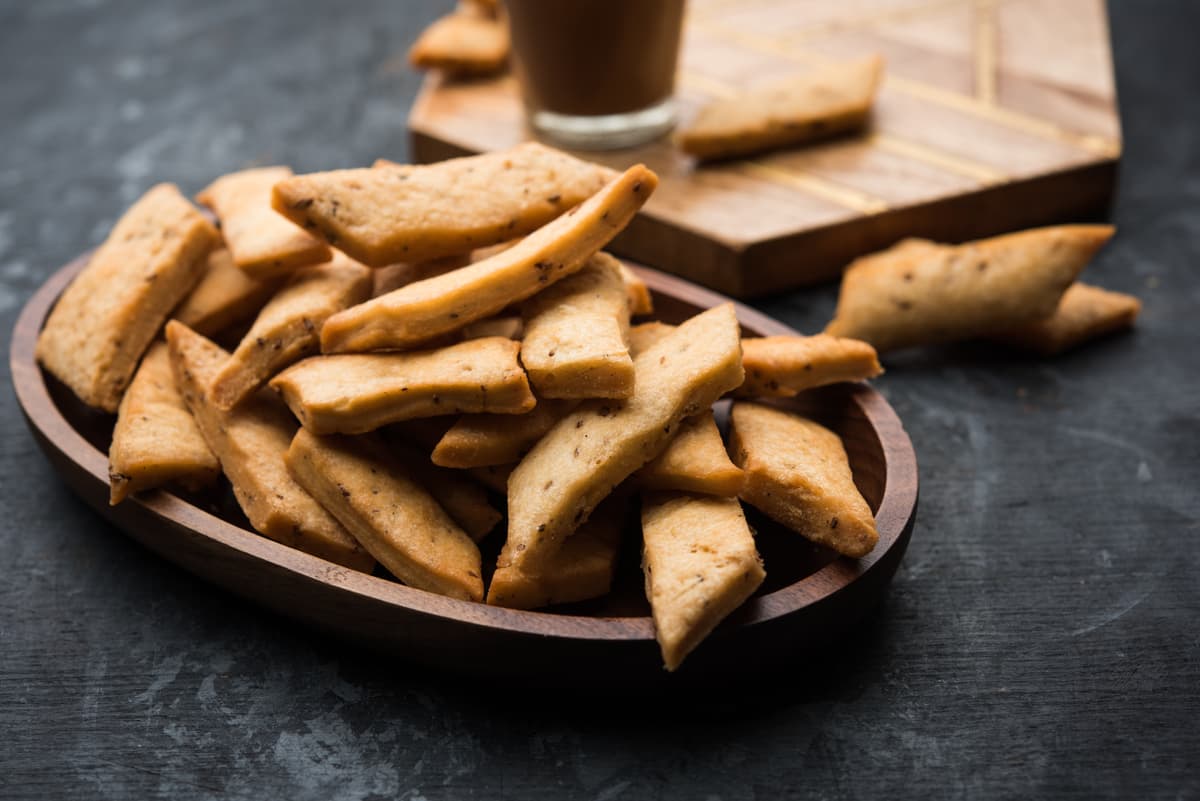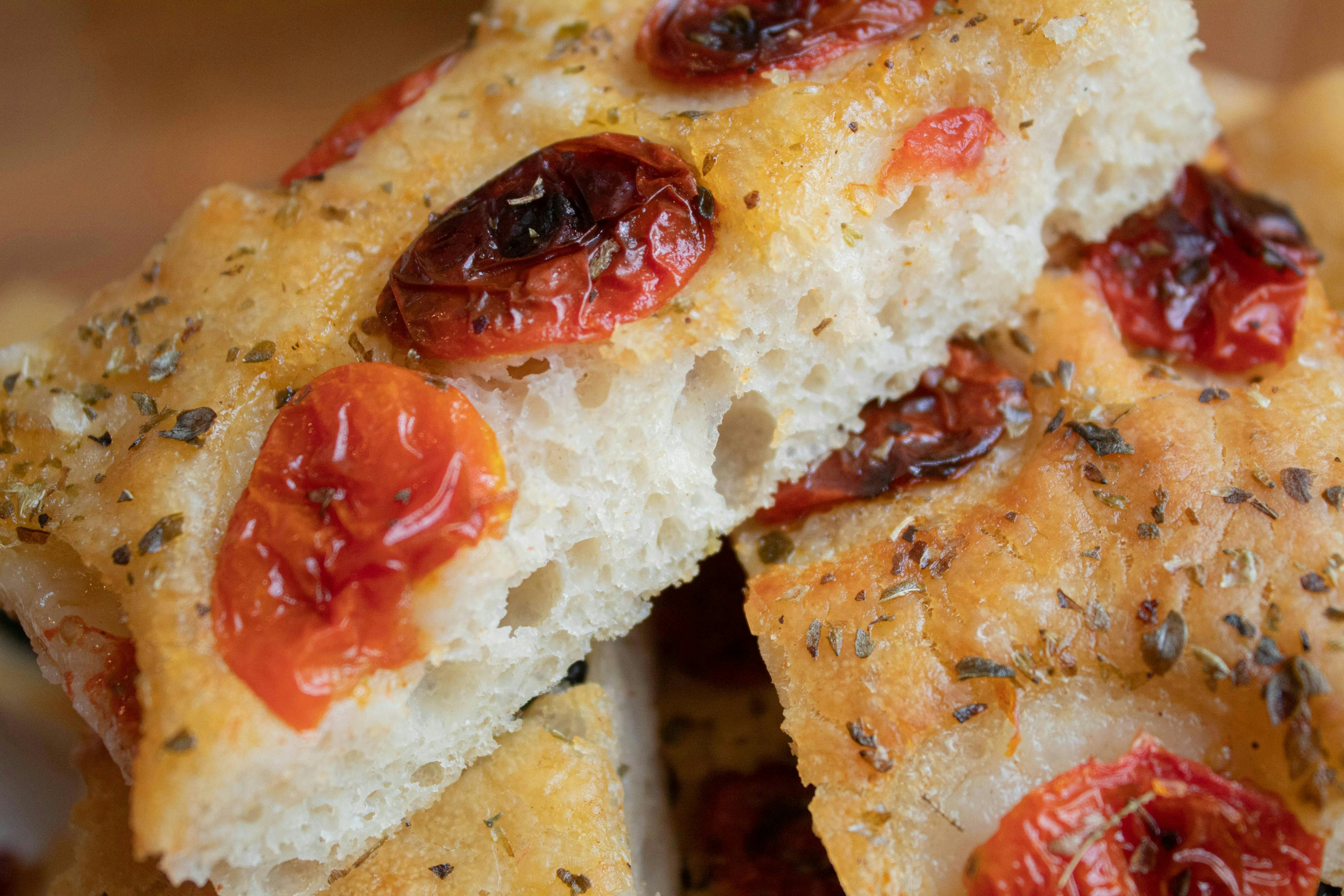
Ingredients
Get them through the links below to support the creator.
- 6 pinch salt
- 6 oil
- 3 tsp cardamom powder
- 1.98 cup powdered sugar
- 18 tbsp ghee (clarified butter)
- 12 cups all-purpose flour (maida)
- 6 water
- 3 cup fine semolina (sooji)
Nutritional Information
Calculated based on standard values with available measurements and may therefore not be accurate.
Nutritional information not available.
Instructions
Step 1
Mixing the Dough:
In a mixing bowl, combine the all-purpose flour (maida), semolina (sooji), powdered sugar, a pinch of salt, and cardamom powder.
Add ghee to the dry ingredients and rub it in using your fingertips until the mixture resembles breadcrumbs.
Gradually add water, little by little, and knead the mixture into a firm dough. Ensure it's not too soft; it should be firm like that for puris.
Step 2
Resting the Dough: Once the dough is ready, cover it with a damp cloth and let it rest for about 15-20 minutes.
Step 3
Rolling and Cutting:
After resting, divide the dough into smaller portions. Take one portion and roll it out into a thick circle, about ¼ inch in thickness.
Using a knife or a cutter, cut the rolled dough into diamond or square shapes. You can make them in the size you prefer.
Step 4
Frying Shankarpali:
Heat oil in a deep pan or kadhai over medium heat.
Once the oil is hot, gently slide a few pieces of Shankarpali into the oil and fry them on medium heat until they turn golden brown and crisp. Stir occasionally for even frying.
Remove the fried Shankarpali using a slotted spoon and place them on paper towels to drain excess oil.
Repeat the frying process with the remaining cut pieces of dough.
Step 5
Cooling and Storing:
Let the Shankarpali cool completely before transferring them to an airtight container. They can be stored for a couple of weeks when stored properly in a cool, dry place.
Enjoy your homemade Shankarpali as a delicious snack with a cup of tea or coffee!
Recipe Story
Shankarpali, a cherished Indian treat, encapsulates the essence of festivities and culinary artistry. This snack, deeply rooted in Hindu traditions, embodies the joyous spirit of celebration. Comprising simple yet wholesome ingredients like all-purpose flour (maida), fine semolina (sooji), powdered sugar, ghee (clarified butter), and a hint of aromatic cardamom powder, Shankarpali is a crispy, sweet delight that transcends generations.
The preparation begins with an amalgamation of flour, semolina, powdered sugar, a dash of salt, and the fragrant touch of cardamom powder. The addition of ghee, meticulously rubbed into the dry mix, creates a crumbly texture that, when kneaded with precision and care, forms a firm, pliable dough. Resting under a damp cloth allows the flavours to intermingle and the dough to settle, readying itself for the transformation that follows.
Each portion of the rested dough is carefully rolled out into sheets, then meticulously cut into diamond or square shapes, a process that engages both skill and patience. These shapes, reminiscent of precious gems, find their way into a bubbling cauldron of hot oil. The sizzle announces the beginning of a transformative journey as the Shankarpali gradually turns golden brown, achieving a satisfying crispness, and releasing an aroma that fills the kitchen, tantalising the senses.
Once the frying is complete, the golden nuggets are delicately lifted, allowing excess oil to drip away, before finding their place on absorbent paper. As they cool, their crisp exteriors give way to a satisfying crunch, while the subtle sweetness and aromatic essence of cardamom captivate the palate.
Shankarpali, though a decadent treat, embodies cultural significance, often shared during festivals and auspicious occasions. While it may not fit every dietary preference due to its use of flour, ghee, and sugar, its role in fostering traditions and creating moments of joy makes it a beloved treasure in the realm of Indian culinary heritage.







